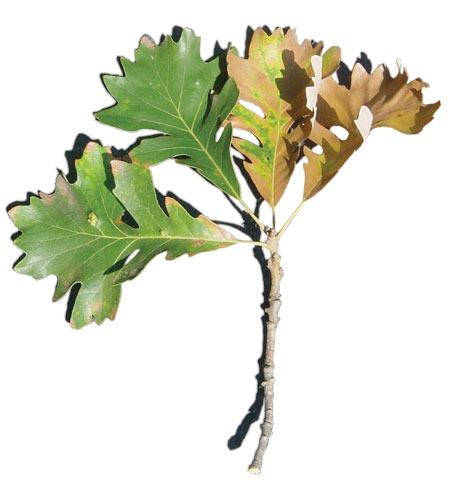Oak Wilt Management

Symptoms of oak wilt differ in the white (bur and white) and red (red and pin) oak groups. Leaves turning brown during the summer is the most common symptom of oak wilt. The spread of oak wilt within an infected tree is much different in the white and red oak groups. An infection from oak wilt can kill a red oak inside of a month. In white oaks, the infection takes much longer to become fatal, often making the diagnosis more difficult. Experience and lab testing are incredibly helpful in setting up a successful oak wilt management strategy.
Management strategies in red oaks focus on treating healthy trees that are adjacent to an infection. Once a red oak becomes infected with oak wilt, there are no treatment options for that individual tree. The focus becomes protecting healthy trees and preventing the disease from spreading.
Oak wilt in the white oak group moves much more slowly. When caught early enough, an infected tree can sometimes be treated therapeutically. Experience is essential in determining oak wilt in white and bur oak trees as the symptoms mimic those of several biotic and abiotic problems.
Treatments for oak wilt involve injecting a systemic insecticide containing propiconazole into a tree. Injections are done around the root flare using small (1/4”) holes near ground level to adequately administer the fungicide. Decades of experience greatly aids our treatments, as there are many details that can make injections less damaging and more effective. Contact us to develop and oak wilt management plan that is customized to your landscape to control the loss of mighty oak trees on your property.
